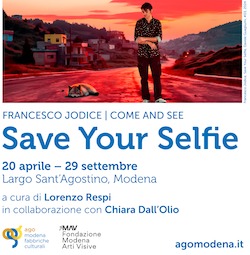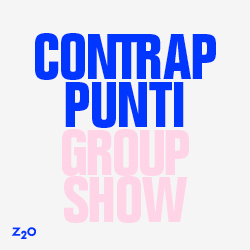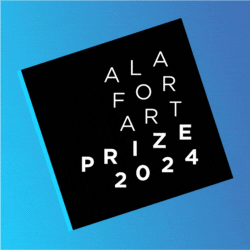[nemus_slider id=”64710″]
—
Located at the center of miart, Generations is a curated section that presents 8 dialogues between artists from different generations. Conceived to create unexpected forms of interactions between historical positions and more recent artists, this section brings together two different galleries, invited to share the same booth. Generations is curated by Douglas Fogle (Independent Curator and writer, Los Angeles) and Nicola Lees, (Director and Curator 80WSE Gallery, New York University, New York)
Bas Jan Ader, Meliksetian Briggs, Los Angeles – Andrea Büttner, Hollybush Gardens, London
Ruth Wolf-Rehfeldt, ChertLüdde, Berlin – Anna-Bella Papp, Stuart Shave/Modern Art, London
Barbara Kasten, Bortolami, New York – Jessica Stockholder, Galleria Raffaella Cortese, Milan
Henri Michaux, Galerie Lelong, Paris-New York – Riccardo Baruzzi, P420, Bologna
Sheila Hicks, Alison Jacques, London – Fernanda Gomes, Alison Jacques, London
Giorgio de Chirico, Galleria Tega, Milan – John Stezaker, The Approach, London
Dirk Braeckman, Zeno X Gallery, Antwerp – Armando Andrade Tudela, Francesca Minini, Milan
Pedro Cabrita Reis, Magazzino, Rome – Rodrigo Torres, A Gentil Carioca, Rio de Janeiro
Interview with Nicola Lees —
ATP: Together with Douglas Fogle you are curating Generations, the section that is taking over from the past THENnow section. Would you like to tell me something more about the main characteristics of this new section?
Nicola Lees: Generations presents eight pairs of galleries in which parallels are drawn between two artists from different generations, in the attempt to underline a dialogue between the past and the present, and between artists who share concerns and ideologies. For each pairing, two different galleries are invited to develop a single booth, creating a tight dialogue between the two positions through a number of works.
ATP: Which were the criteria you choose to pick the eight couples of dialoguing artists?
NL: We were able to approach each pairing from a different angle. We wanted to introduce some new artists to miart as well as include some familiar names.
For example; I am particularly excited for the pairing of British artist John Stezaker (b.1948) with Giorgio de Chirico (1988-1978) as this has been an opportunity to fulfill a lifelong dream of the artist to show alongside one of his major influences. We are also delighted to be pairing a young Italian artist Riccardo Baruzzi (Lugo, 1976) with the poet, writer and painter Henri Michaux (b. 1899-1984 in Belgium). Lelong Gallery will present a selection of works on paper by Michaux from the 1960s and 70s. Michaux was also greatly influenced by de Chirico, as well as by his experiences taking hallucinogenic drugs such as mescaline. He worked in a Surrealist style with figurative elements that verged on abstraction. We saw many connections with Michaux work and the pieces that Baruzzi exhibited at P420 in his recent solo exhibition “Del disegno disposto alla pittura”. “To fall with elegance. To fall, tearing ligaments, and instantly rise as if nothing had happened, without injury. This, to some extent, is what is attempted in my drawing.” — R. Baruzzi
Themes of falling are also central to Bas Jan Ader who appears in another pairing. Bas Jan Ader’s widow Mary Sue Ader Anderson has been very involved with the selection of his works that Melikestian Briggs will show at miart alongside Andrea Büttner with Hollybush Gardens, London. Douglas Fogle and I are big fans of Andrea Büttner’s work. Her new commission was central to the Graphic Art Biennial that I curated in 2015 and many of these works travelled to her solo show at the Walker Art Center, Minneapolis, the following year. It is a great privilege to work with the estate of Bas Jan Ader. His work will be very familiar to the Italian audience as he was recently the subject of a major retrospective at the Museo d’Arte Moderna di Bologna (MAMbo), Italy. He is also part of Christine Macel exhibition for the 57th Internalational Art Exhibition at the Venice Biennale 2017. Exhibited for the first time are several of Ader’s photographic studies for works made in the early 1970s along with his seminal video work Primary Time, 1974.
It is wonderful that we were able have an extensive presentation of Ruth Wolf-Rehfeldt (b.1932, Living in the Berlin neighborhood of Pankow (formerly of East Berlin)) archive from 1972 – 1989 by Chert alongside new work in Modern Art’s presentation of Anna-Bella Papp (b. 1988, a Romanian born artist living and working in Antwerp). Wolf-Rehfeldt stopped producing any art after the fall of the Berlin wall in 1989 as she felt that her involvement was no longer needed. (I have included more information about this pairing in the next section).
ZenoX, Antwerp will be exhibiting Dirk Braeckman (b. 1958), he is the chosen artist for the Belgium Pavilion at the Venice Biennale 2017. He will be exhibiting his photographs inside an installation by Armando Andrade Tudela (b. 1975, Lima Peru, living and working in St Etienne, France) Francesca Minini, Milan. Chicago based artist Barbara Kasten (b. 1936) and Jessica Stockholder (1959) are almost the closest in age and also location. Other pairings include Sheila Hicks (b. 1934, Hastings, Nebraska) with Fernanda Gomes (b.1960, Rio de Janeriro, Brazil), both in the stand of Alison Jacques, London, Portuguese artist Pedro Cabrita Reis (b.1956), Magazzino, Rome with Brazilian artist Rodrigo Torres (b.1981), A Gentil Carioca, Rio de Janeiro.

ATP: The difference between the researches of artists coming from different generations is not always clear, and, on the contrary, often it’s possible to feel an harmony of languages, instead of generational gaps. Talking about the eight selected artists couples, could you tell me more about the discussion between some artists we will find in the fair?
NL: As I just mentioned one of our major archive displays will be of the zicographic prints of visual poetry composed of typographic signs by Ruth Wolf-Rehfeldt. Berlin based gallery Chert will be showing this under-recognized artist who was an active participant of the international mail art movement. This archive (from 1972-1989) will be show along side sculptures by Anna-Bella Papp. Papp’s work consists of subtly contoured topographies in creamy un-glazed, un-fired clay. At first glance they can be read as molds of restrained architectural adornments. Their symbolic functions emphasized by the fact that the rectangular slabs or tablets – displayed on glass tables – approximate the dimensions of A4 paper and the individual tablets themselves follow a similar logographic logic. Each is a defined character in a cryptic alphabet, which is endlessly recomposed across surfaces in new configurations. The process of working systematically and systems themselves are important to both artists. Wolf-Rehfeldt’s work from classic poetry, simple typewritten texts, visual poetry, concrete poetry to abstraction, was based on the knowledge that the functionaries in the GDR would be reading her exchanges and became forced spectators of the work. This surveillance was integrated into her methods of making them hopefully confused. This pairing brings a contemporary reading onto Ruth Wolf-Rehfeldt political contribution, as well as a new layering of cryptography to Papp’s new work. Papp will also be showing in the Project Room at Fondazione Arnaldo Pomodoro during Milanese Art Week.
Four paintings by de Chirico will be shown in an installation designed by Stezaker that will include works from his ‘Film Still Collage’ series, ‘Fragments’ as well as sculptures from the 1970s, which explore ruptures in time and the alluring mysteries of the everyday. The most familiar are the framed collages that combine two found printed images, usually old postcards, film stills and actor’s promotional portraits from a bygone era. In relation to the ‘Film Still Collages’, The Approach Gallery will also be showing works from what are referred to as ‘Fragments’. These are tiny cut-out sections of postcards where the artist has edited the small incidental figures that appear in the original image, focusing on landmark subject matter. There are hundreds of these works spilt into single pieces, diptychs and larger groups. These small but powerful and melancholic works will compliment the atmosphere of many of de Chirico’s landscape paintings. Along with the collages and fragments. Stezaker has sited de Chirico’s Le musee inquietanti, 1959 also the subject on Sylvia Plath’s poem ‘The Disquieting Muses’ which will be juxtaposed with his rarely seen sculptural works that apply the same principle and fascination with finding and re-appropriating historical images but this time are built from mannequin body parts. By presenting these unaltered hands on plinths the ‘readymades’ take on a surreal still-life quality evoking dream like scenarios and emotions that lay at the heart of Stezaker and de Chirico’s work.

ATP: Among Generation proposals, are there artists who produced specific works for this occasion?
NL: The specific works that will be shown for the first time from Bas Jan Ader estate are photographic studies for works made in the early 1970s along with his seminal video work Primary Time, 1974.
Working mainly in film, video, photography and performance, Bas Jan Ader’s oeuvre merges a conceptual framework with a tragicomic beauty referencing Hollywood slapstick of Buster Keaton and W.C. Fields, the drama of Romanticism, the absurdity of existence found in such literary works as La Chute (The Fall) by Albert Camus and All That Fall by Samuel Beckett and the profound influence of the Dutch Modernist tradition, alongside his central themes of falling, physical and emotional vulnerability, mortality and risk.
The Study for Fall, 2 Amsterdam, 1970, which will be presented at the fair, is a five part sequence of vintage photographs based on the film of the same name, depicting the artist riding a bicycle, awkwardly, while he holds a bouquet of flowers in his hand, making it difficult to steer, into a canal. Referring to these Fall works, Ader stated “… When I fell of the roof of my house or into a canal, it was because gravity made itself master over me.” The Study for Broken fall (geometric), 1971 takes place in Westkapelle in the southwest of Holland and in it references an artistic dispute by two seminal Dutch Modernists, Piet Mondrian (1872-1944) who strictly and dogmatically used only horizontal and vertical lines in his late abstract works, and Theo van Doesburg, (1883-1931) who introduced diagonals into his abstract works around the same time. A sawhorse represents the horizontal and vertical, while Ader’s falling body is the diagonal. This action takes place in an art historically loaded site, in front of the famous lighthouse at Westkapelle, which also appears in Mondrian’s early paintings, as well as in his early experiments in separating primary colors in his work, his first steps toward De Stijl and Neo-Plasticism. In the Study for On the road to a new Neo-Plasticism, 1971, Ader uses his body, along with primary colored rectangular objects and a blue blanket, to make a Mondrian-like abstract painting, his body being in essence the bold, graphic black lines that delineate the blocks of color in Mondrian’s later abstract work. Mondrian, the giant of Dutch Modernism, makes his presence also felt in Primary Time,
a video performance where the artist rearranges a mixed bouquet of flowers, adding, removing and re-organizing them into bouquets of a single primary color in sequence over the 25 min duration.
ATP: What is your opinion on the always growing importance of curators in art fairs structure?
NL: The Artistic Director Alessandro Rabottini has been an incredible leader in guiding us on this section both curatorial and also from an organizational position. This is a great opportunity to bring artists and works to Milan and also Italy for the first time. Art Fairs play an important role and I hope that the specific relationship that we have created will give some different and surprising incites into the artist’s work.
ATP: With regard to the prize that one of the booth of the Generation section will receive, which criteria do you hope the jury will follow?
The jury includes Stefan Kalmár, Director, Institute of Contemporary Arts, London, Gianfranco Maraniello, Director, MART – Contemporary and Modern Art Museum of Trento and Rovereto, Philippe Van Cauteren, Artistic Director, S.M.A.K. Museum for Contemporary Art, Ghent. I will leave all of the deciding to them.













